Peristaltic pumps can provide ideal pumping solutions for many applications, particularly those dealing with materials that are abrasive, corrosive or viscous. They can be used to pump a variety of materials from clean/sterile fluids to highly aggressive fluids. They also are commonly used to move intravenous fluids through an infusion device, aggressive chemicals, high solid content slurries, and other materials that require isolation of the product from the environment.
In addition, peristaltic pumps use a gentle pumping action that is ideal for shear, sensitive polymers and fragile cell cultures. Peristaltic hose pumps can circulate slurry with specific gravities of 1.8 and higher. They can also handle up to 80 percent solid content.
Because peristaltic pumps do not have valves, seals or glands, they are relatively inexpensive to maintain compared with other pumping equipment. Unlike traditional pump types that suffer from frequent downtime and low plant performance, hose pumps can pump dense fluids while maintaining high levels of plant availability.
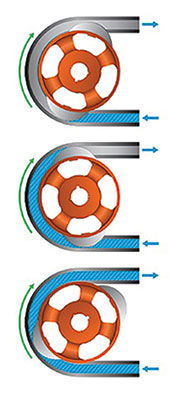 Figure 1. Peristaltic pumps transfer fluid by compressing and relaxing a hose or tubing, creating a vacuum that draws in the fluid. (Images and graphics courtesy of Verderflex)
Figure 1. Peristaltic pumps transfer fluid by compressing and relaxing a hose or tubing, creating a vacuum that draws in the fluid. (Images and graphics courtesy of Verderflex)The Basics of Peristaltic Dosing Pumps
Peristaltic pumps are based on alternating compression and relaxation of a hose or tube. A rotating shoe or roller passes along the length of the hose or tube to compress it, creating a seal between the suction and discharge sides of the pump and eliminating product slip. Upon restitution of the hose or tube, a strong vacuum is formed, drawing product into the pump.
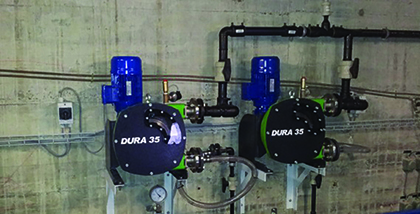 Image 1. Two hose pumps move saltwater through a 350-meter pipe in a water softener plant.
Image 1. Two hose pumps move saltwater through a 350-meter pipe in a water softener plant.During this process, the pumped medium does not contact any moving parts and is completely contained within a heavy-duty hose or a precision-extruded tube. This mechanism makes the pump suitable for accurate dosing applications. The hose has a pressure rating of up to 16 bar, and the tube has a pressure rating of up to 2 bar.
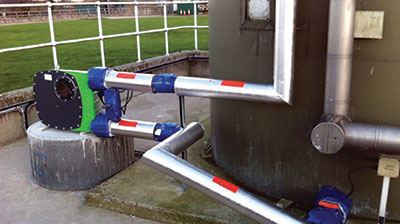 Image 2. The hose pump doses and circulates lime mixture in the tank.
Image 2. The hose pump doses and circulates lime mixture in the tank.Applications
Peristaltic pumps are used in many industrial applications. Their design makes them especially suited for pumping abrasives and viscous fluids.
pH and Odor Treatments
Wastewater treatment chemicals—such as lime, Kalic, Kalkmilch ferric salts, caustic soda, aluminum sulfate, ferrous sulfide and powder-activated carbon (PAC)—are used to rectify the pH of wastewater discharges. Many of these chemicals have common properties that pose challenges for certain pumps, making peristaltic pumps an ideal dosing solution. For example, these chemicals can cause wear problems in progressing cavity pumps, leading to frequent maintenance downtime and high-stator replacement costs. Lime, as another example, is so viscous that it can cause diaphragm pumps to clog, requiring continual maintenance.
Peristaltic pumps, on the other hand, have linear flow-speed characteristics that provide precise control of the chemicals being dosed. Solids suspended in the liquid do not pose problems for peristaltic pumps, and their seal-free design helps eliminate leaks.
Sodium Hypochlorite Dosing
Sodium hypochlorite has effective disinfection properties and is often used for drinking water disinfection and odor control. However, sodium hypochlorite tends to gas, which can cause diaphragm dosing pumps to vapor-lock. This interrupts the treatment process. Peristaltic pumps are less likely to face this problem because they pump gas and liquid, ensuring that the entire liquid stream receives a consistent dose.
Dosing Polymers & Ferric in Coagulation Processes
In the coagulation process, ferric and polymers are dosed into clean water plants to remove peat, suspended solids and residual colors from clean water streams. In wastewater treatment, sophisticated polymers maximize plant throughput by increasing the solid separation rate, allowing greater volumes of primary waste to be treated per day.
Because most of these polymers are highly shear-sensitive, centrifugal and screw pumps increase coagulant cost and lower plant efficiency.
The gentle peristaltic action of abrasion-resistant hose pumps maximizes coagulant performance by maintaining the particle size. The linear flow-speed characteristic of peristaltic pumps allows for accurate coagulant dosing rates, optimizing chemical usage.
This mechanism can help increase overall plant efficiency and reduce costs.
Transferring Sludge
Primary sludge pumps in wastewater treatment plants must transfer all materials in the sludge lagoon.
Even with the use of screens to remove rags, paper and other modern-day debris, traditional pumping solutions such as progressing cavity pumps contribute to high maintenance costs when rags become trapped around the rotor.
Peristaltic pumps prevent this problem by actually moving the rags with the fluid, enabling the rag removal screen to be located after the pump.
Even after pumping harsh and heavy materials, peristaltic pumps have only one service part—the hose.
Peristaltic Pumps Put to the Test
The Challenge
A multinational electronics firm with plants throughout South Korea had used metering pumps for dosing aluminum sulphate in the company’s wastewater treatment facilities for many years. This process had been causing problems such as the inconsistent dosing of aluminum sulphate when tank levels were low, unscheduled maintenance periods and high maintenance costs. The plant engineers approached a local peristaltic pump distributor to find a solution for these problems.The Solution
After consultation with the customer and site visits, the distributor selected eight peristaltic tube pumps to replace the company’s existing metering pumps. The new pumps operate at flow rates ranging from 78 milliliters per minute (ml/min) to 1,080 ml/min with discharge pressures of up to 1.5 bar.The Results
The end user now experiences predictable maintenance patterns, and the service period has been increased from 600 hours to 1,000 hours. This change has reduced the process downtime that the company experiences while using metering pumps and has provided a significant reduction in maintenance costs.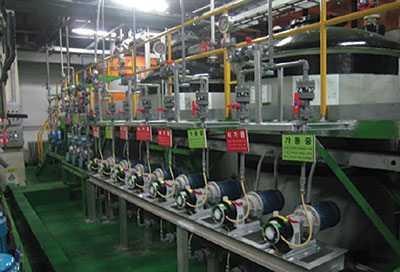 Image 3. Tube pumps replaced the existing metering pumps.
Image 3. Tube pumps replaced the existing metering pumps.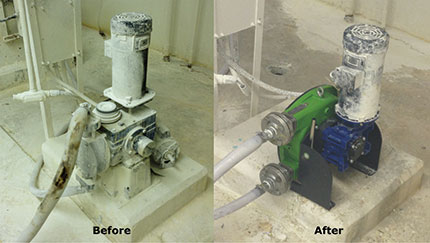 Image 4. A hose pump replaces a diaphragm metering pump.
Image 4. A hose pump replaces a diaphragm metering pump.

